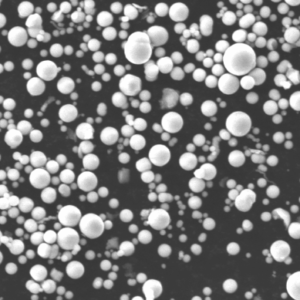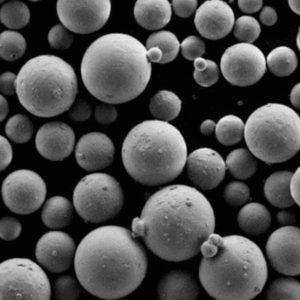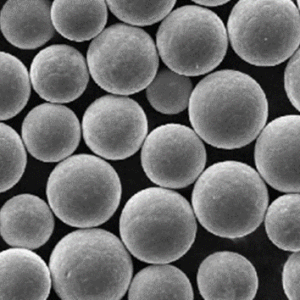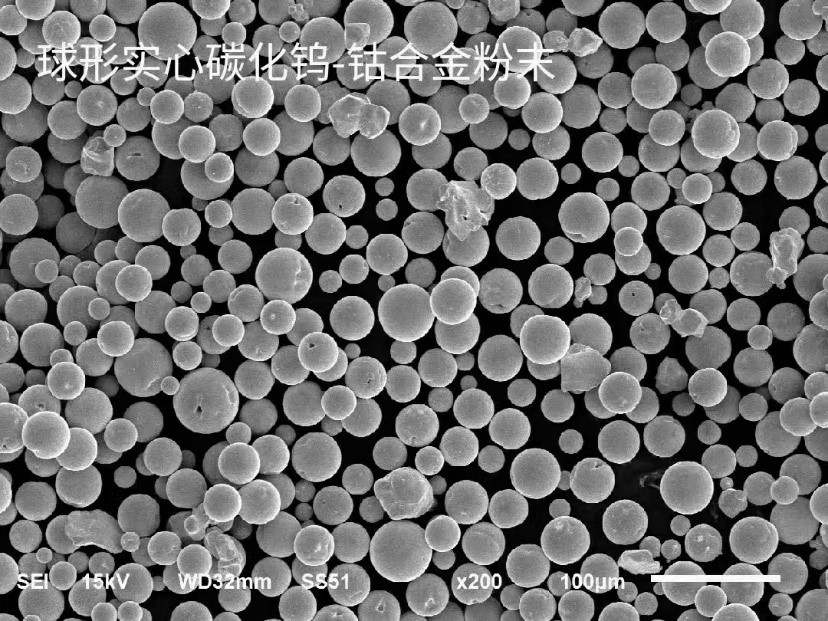Titanium carbide (TiC) powder is an essential material in various industries, known for its hardness, high melting point, and chemical stability. Whether you’re involved in manufacturing, metallurgy, or material science, understanding TiC powder can open up numerous possibilities for innovation and efficiency. This article covers everything you need to know about TiC powder, from its properties and applications to detailed guides on equipment, installation, and operation.
Overview of TiC Powder
Titanium carbide powder, commonly referred to as TiC, is a high-performance material used extensively in industries that require extreme hardness, wear resistance, and high-temperature tolerance. TiC powder is typically gray with metallic luster and has a cubic crystal structure, giving it unique properties that make it useful in cutting tools, wear-resistant coatings, and various other applications.
The molecular formula for titanium carbide is TiC, and it has a density of approximately 4.93 g/cm³. TiC is renowned for its high melting point of 3,100°C and excellent electrical conductivity. Because of its stability under extreme conditions, it is commonly used in industries like aerospace, automotive, and even electronics.
Key Properties of TiC Powder:
- High hardness: Ranges from 9-9.5 on the Mohs scale
- Thermal stability: Can withstand temperatures of up to 3,100°C
- Wear resistance: Ideal for tools and coatings that endure abrasive environments
- Electrical conductivity: Comparable to metals, enabling specialized applications
- Chemical inertness: Resistant to oxidation, acids, and other corrosive substances

Present Equipment Guide for TiC Powder
Handling TiC powder requires specialized equipment due to its fine particle size and the need for precision in industrial applications. Whether you’re working with small batches in a laboratory setting or large-scale production, having the right equipment ensures consistency, safety, and efficiency.
Types of Equipment Used in TiC Powder Production and Application
| Equipment Type | Description | Key Uses |
|---|---|---|
| Ball Mills | High-energy milling to produce finely ground TiC powder. | Ideal for breaking down titanium and carbon precursors to synthesize TiC. |
| Atomizers | Produces fine TiC powder by atomizing molten titanium-carbon alloys. | Used in large-scale industrial settings for high-volume powder production. |
| Plasma Arc Reactors | Plasma treatment of titanium and carbon to form TiC powder with uniform quality. | Essential for high-purity TiC powder production for aerospace applications. |
| Sintering Machines | Compacts and heats TiC powder to create solid components. | Critical in manufacturing wear-resistant parts and cutting tools. |
| Coating Systems | Applies TiC coatings onto tools or components for enhanced wear resistance. | Used in manufacturing industries for extending the life of machinery parts. |
Brewing TiC Powder: The Manufacturing Process Explained
Creating titanium carbide powder involves a few critical steps. Most production methods start by combining titanium and carbon and subjecting them to high temperatures and pressure in controlled environments. Here’s a detailed breakdown of the typical TiC powder production process:
1. Titanium and Carbon Sourcing
The primary materials for TiC are titanium and carbon. Titanium is often sourced from minerals like ilmenite or rutile, while carbon is obtained in its purest form (graphite).
2. High-Temperature Synthesis
The titanium and carbon are combined in a high-energy ball mill or other mixing equipment. The blend is then heated to temperatures around 2,800°C to 3,100°C. The extreme heat causes a reaction between titanium and carbon, forming titanium carbide.
3. Grinding and Size Reduction
Once the TiC is synthesized, it is subjected to grinding to break it down into fine powder form. Ball mills or jet mills are commonly used to achieve the necessary particle size.
4. Purification and Quality Control
The powder is often purified to remove impurities like oxides. Plasma arc reactors can be employed for this purpose, ensuring the final product is of the highest quality. Afterward, the powder is sieved to ensure consistency in particle size.
TiC Powder Capacities, Spaces, Design, and Customization
Titanium carbide powder is used in various capacities and settings, which requires customizations based on the application. Manufacturers often provide customizable options in terms of powder capacity, layout, and design depending on whether it’s used for coatings, cutting tools, or high-performance ceramics.
| Parameter | Details |
|---|---|
| Powder Capacity | TiC powder is available in quantities ranging from small-scale laboratory batches (grams) to industrial bulk (tons). |
| Space Requirements | Powder storage and processing require climate-controlled environments with dust filtration systems. |
| Customization | TiC powder can be produced in varying particle sizes, depending on whether it’s for fine coatings or industrial ceramics. |
-
 Ti6242 Titanium Alloy Powder
Ti6242 Titanium Alloy Powder -
 Carbonyl Iron Powder (CIP)
Carbonyl Iron Powder (CIP) -
 Kovar Fe-Ni-Co Spherical Powder
Kovar Fe-Ni-Co Spherical Powder -
 FeCoNi High Entropy Alloy Powder
FeCoNi High Entropy Alloy Powder -
 Inconel 713LC Nickel Alloy Powder
Inconel 713LC Nickel Alloy Powder -
 FeCoNiCrMo and FeCoNiCrMo0.5 High Entropy Alloy Powder
FeCoNiCrMo and FeCoNiCrMo0.5 High Entropy Alloy Powder -
 F55 (Alloy 100) super duplex stainless steel powder
F55 (Alloy 100) super duplex stainless steel powder -
 High-manganese Steel Powder
High-manganese Steel Powder -
 Ti811 Titanium Alloy Powder
Ti811 Titanium Alloy Powder
Suppliers and Price Range for TiC Powder
The price of TiC powder can vary widely depending on the supplier, purity, and quantity purchased. Below is an overview of some prominent suppliers and the general price range of TiC powder.
| Supplier | Region | Price Range (per kg) |
|---|---|---|
| HC Starck | Europe | $100 – $200 per kg (high-purity TiC) |
| Materion | United States | $150 – $250 per kg (industrial-grade TiC) |
| Stanford Advanced Materials | Global | $90 – $180 per kg |
| Japan New Metals Co., Ltd | Japan | $120 – $220 per kg (customized particle sizes available) |
Installation, Operation, and Maintenance of TiC Powder Equipment
Working with TiC powder requires specific installation, operation, and maintenance procedures, especially in high-performance environments.
| Stage | Details |
|---|---|
| Installation | Equipment for TiC powder, like ball mills and coating systems, requires precise calibration and dust control systems. |
| Operation | Operators must wear protective gear due to the fine particle size. Processes like sintering require exact temperature control. |
| Maintenance | Regular cleaning and calibration of machinery are essential to prevent clogging and ensure precision in powder application. |
How to Choose a TiC Powder Supplier
When selecting a TiC powder supplier, several factors must be considered, including price, product quality, and delivery reliability. The table below summarizes key considerations.
| Consideration | Description |
|---|---|
| Price | Consider bulk discounts and price per kg for different suppliers, as well as hidden costs (e.g., shipping). |
| Purity Level | Higher purity powders are essential for high-end applications like aerospace or medical industries. |
| Delivery Time | Suppliers with shorter lead times are preferred in industries that rely on just-in-time manufacturing. |
| Customization | Some suppliers offer particle size customization and other options for niche applications. |
Comparing Advantages and Disadvantages of TiC Powder
It’s important to weigh the advantages and disadvantages of using TiC powder in various applications.
| Advantages | Disadvantages |
|---|---|
| High Hardness and Wear Resistance | Expensive compared to other materials like tungsten carbide |
| Thermal Stability | Difficult to process at a small scale due to high temperatures required |
| Electrical Conductivity | Limited suppliers globally |

FAQs
| Question | Answer |
|---|---|
| What is TiC powder used for? | TiC powder is primarily used in hard coatings, cutting tools, and wear-resistant materials. |
| Is TiC powder conductive? | Yes, TiC powder has excellent electrical conductivity, making it suitable for electronic components. |
| What is the melting point of TiC powder? | TiC powder has a very high melting point of approximately 3,100°C. |
| How is TiC powder made? | TiC powder is typically produced by high-temperature reactions between titanium and carbon. |
| Is TiC powder safe to handle? | While TiC powder is chemically stable, it is a fine particulate and should be handled with appropriate safety gear. |
In conclusion, TiC powder is a highly specialized material with significant advantages in industries requiring hardness, wear resistance, and high-temperature performance. Its diverse applications make it essential in areas like aerospace, electronics, and industrial manufacturing. With proper handling, equipment, and supplier selection, TiC powder can be an invaluable resource for businesses looking to enhance their operations.





